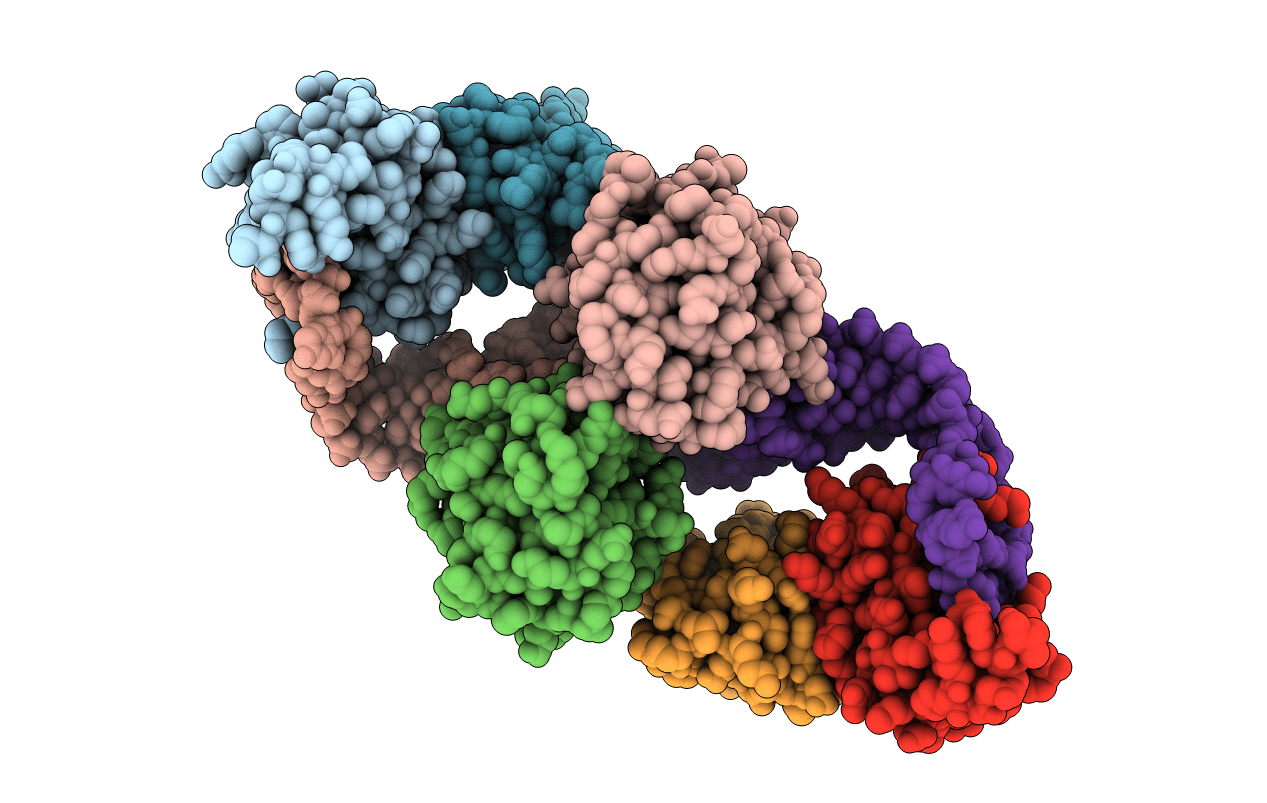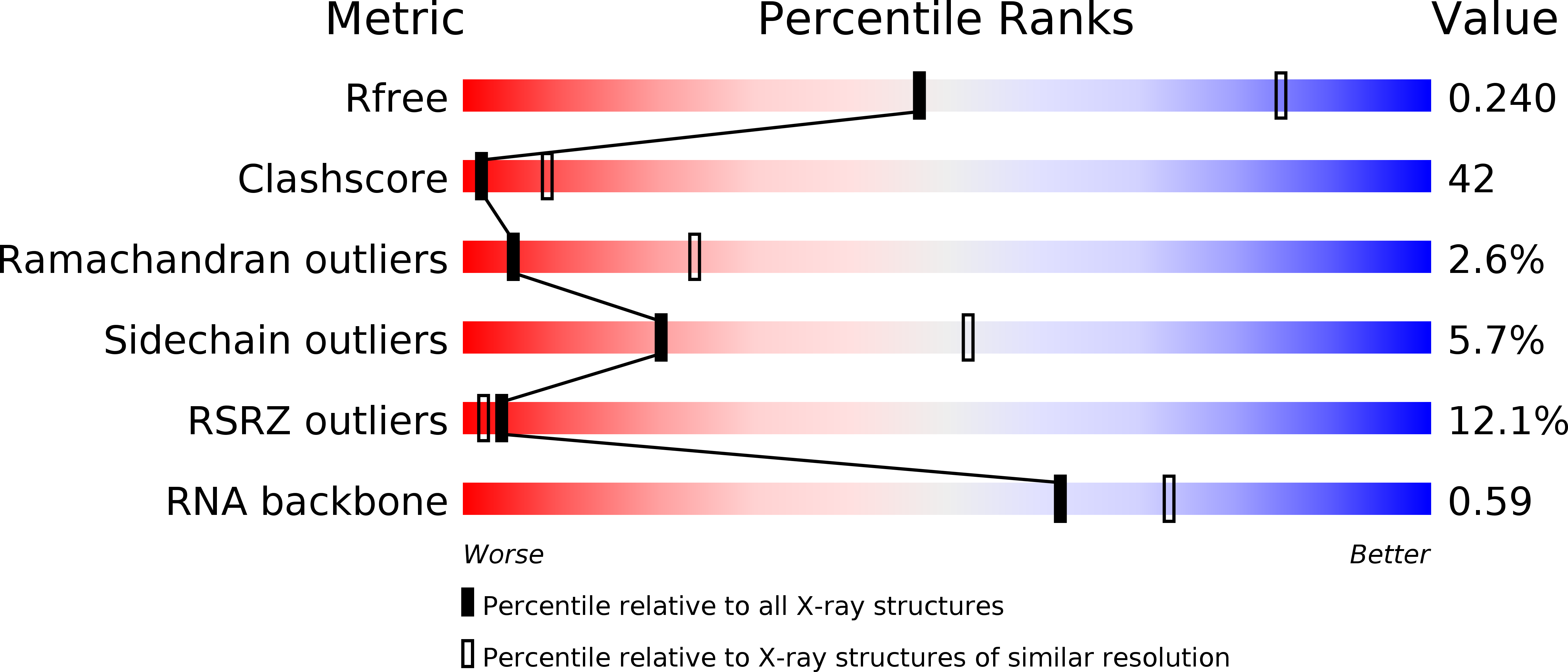
Deposition Date
2015-10-06
Release Date
2016-05-25
Last Version Date
2024-01-10
Entry Detail
PDB ID:
5FJ4
Keywords:
Title:
Structure of the standard kink turn HmKt-7 as stem loop bound with U1A and L7Ae proteins
Biological Source:
Source Organism:
HOMO SAPIENS (Taxon ID: 9606)
ARCHAEOGLOBUS FULGIDUS (Taxon ID: 224325)
HALOARCULA MARISMORTUI (Taxon ID: 2238)
ARCHAEOGLOBUS FULGIDUS (Taxon ID: 224325)
HALOARCULA MARISMORTUI (Taxon ID: 2238)
Host Organism:
Method Details:
Experimental Method:
Resolution:
2.95 Å
R-Value Free:
0.23
R-Value Work:
0.19
R-Value Observed:
0.20
Space Group:
C 2 2 21


